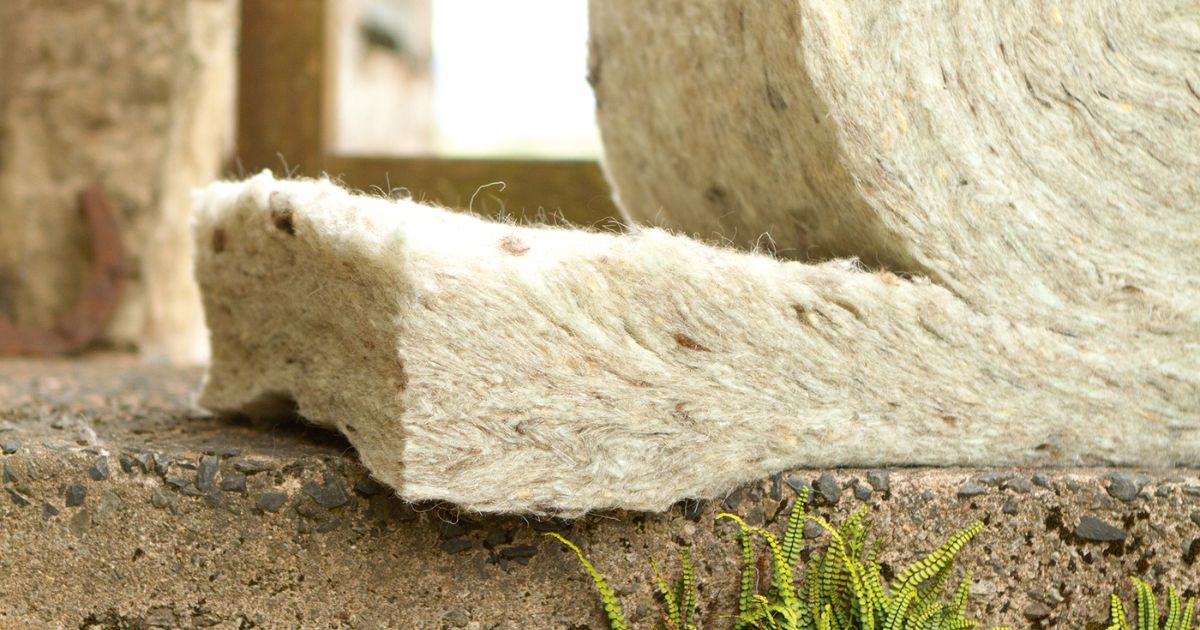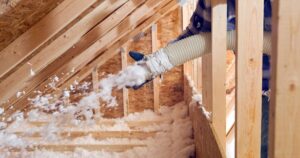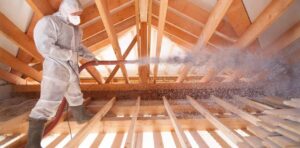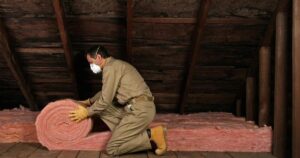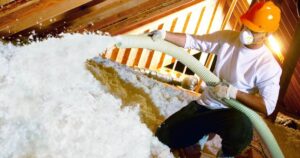Insulation is a material or structure used to slow down the transfer of heat, sound, or electricity. It is commonly used in various applications to maintain a desired temperature, reduce energy consumption, protect against noise, and enhance safety. Insulation can take on various appearances depending on the type and location within a building.
Understanding what insulation looks like and how it functions is essential for anyone interested in creating a well-insulated and energy-efficient space. So, the next time you see insulation, remember the critical role it plays in keeping your environment cozy and eco-friendly.
Common Insulation Materials
- FIBERGLASS
- FOAM BOARD
- CELLULOSE
- SPRAY FOAM
Fiberglass Insulation

Fiberglass insulation is a widely used and recognizable type of insulation material. It is known for its distinct appearance and characteristics. Fiberglass insulation consists of fine glass fibers that are tightly woven or compressed into rolls, batts, or loose-fill forms.
It is typically pink or yellow in color due to the resin used to bind the fibers together. This insulation material is designed to fit snugly between wall studs, ceiling joists, and attic spaces.
Fiberglass insulation is also appreciated for its fire-resistant properties, which add an extra layer of safety to buildings. When used correctly, it can help slow down the spread of flames in the event of a fire. It is a non-combustible material, further contributing to its fire safety attributes.
Foam Board Insulation

Foam board insulation is a popular and distinctive type of insulation material with unique characteristics. Unlike traditional insulation materials like fiberglass or cellulose, foam board insulation has a rigid appearance. It consists of solid boards or sheets that are typically made from polystyrene, polyisocyanurate, or polyurethane foam.
These boards are commonly installed on the exterior of buildings, between the building’s structural framework and the exterior cladding.
One of the distinguishing features of foam board insulation is its ability to provide both thermal and moisture resistance. The closed-cell structure of the foam boards forms a barrier that helps prevent heat transfer and also acts as a moisture barrier. This is particularly advantageous in areas with high humidity or regions prone to temperature extremes.
Cellulose Insulation

Cellulose insulation is a unique and eco-friendly type of insulation material that has distinct characteristics and an appearance different from other common insulation options. This insulation is made primarily from recycled paper products, which are treated with fire-retardant chemicals to enhance safety. The result is an insulation material with a granular appearance, similar to finely chopped newsprint or paper fibers.
One of the remarkable qualities of cellulose insulation is its ability to resist settling. Over time, some insulation materials can lose their effectiveness as they settle, leaving gaps. Cellulose insulation, however, maintains its integrity and thermal performance, making it a long-lasting and reliable option for insulation.
Spray Foam Insulation
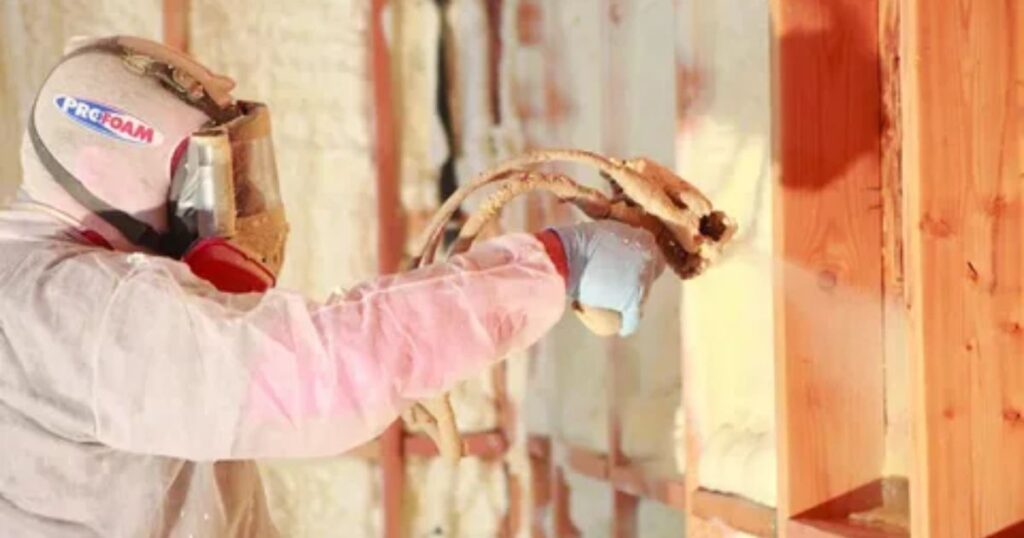
Spray foam insulation is a versatile and innovative insulation material known for its unique application method and distinct appearance. Unlike traditional insulation materials like fiberglass or cellulose, spray foam insulation starts as a liquid and expands into a solid foam when applied. This transformation process results in a foamy and often uneven texture that adheres to surfaces, sealing gaps and providing an airtight thermal barrier.
- The distinct characteristic of spray foam insulation lies in its versatility and effectiveness in sealing and insulating various areas within a building. When applied, it can expand to fill gaps and voids, ensuring that there are no areas left uninsulated. This capability makes it an excellent choice for improving energy efficiency, reducing drafts, and enhancing temperature control in buildings.
- Spray foam insulation is highly effective at creating an airtight seal, which not only prevents heat transfer but also helps control moisture infiltration. Its moisture-resistant properties make it suitable for use in damp or humid environments. Additionally, the airtight seal can contribute to improved indoor air quality and reduced energy bills.
- One notable feature of spray foam insulation is its adhesive quality, allowing it to bond to various surfaces like wood, concrete, and metal. This adhesive nature ensures that it remains in place, providing long-lasting insulation benefits.
- The appearance of spray foam insulation varies depending on the specific type used. Open-cell spray foam has a soft, spongy texture with a less rigid appearance, while closed-cell spray foam has a denser and more solid texture. Both forms offer high insulation value, measured in terms of R-value, and provide exceptional thermal resistance.
- These various insulation materials serve the common purpose of reducing heat transfer, maintaining temperature control, and improving energy efficiency within buildings. While they may not always be visible once installed, their performance is critical for creating comfortable and energy-efficient indoor environments.
Types of Insulation
Insulation can take on a variety of forms, each with its own unique appearance. One of the most common types is fiberglass insulation, which looks like fluffy pink or yellow material that is often packed into walls or attics.
Another common type is foam board insulation, which has a rigid appearance and is typically used on the exterior of buildings. Additionally, loose-fill insulation, resembling small particles, is often blown into attic spaces to provide coverage.
Appearance and Structure
The visual aspect of insulation depends on the material used. For instance, cellulose insulation is composed of recycled paper fibers and has a granular texture. Spray foam insulation, on the other hand, starts as a liquid and expands into a solid foam, which can be seen adhering to surfaces. Each type is tailored to fit specific spaces and insulation needs, but all share the common goal of minimizing heat transfer.
Energy Efficiency
Insulation primarily serves as a barrier to heat flow, keeping indoor spaces warm in the winter and cool in the summer. By reducing the transfer of heat through walls, roofs, and floors, insulation significantly improves a building’s energy efficiency. These results in lower energy bills, reduced environmental impact, and a more comfortable living or working environment.
Sound Insulation
Insulation isn’t only about maintaining temperature; it also plays a crucial role in sound insulation. Many insulation materials are designed to absorb and dampen sound, ensuring a quieter indoor space. Acoustic insulation often resembles dense, foam-like materials and can be found in walls, floors, and ceilings of sound-sensitive areas like theaters or recording studios.
FAQs
What Colour is insulation?
Properly working insulation should be a yellow, white, green, or pink color depending on the manufacturer.
What insulation looks like cotton?
The first and most common type of attic insulation is fiberglass batt insulation.
Which insulation is best?
Overall, if you are looking for the best long-term solution, foam insulation products will create the air seal in your home that will make it more comfortable while saving you money on your monthly energy bills.

